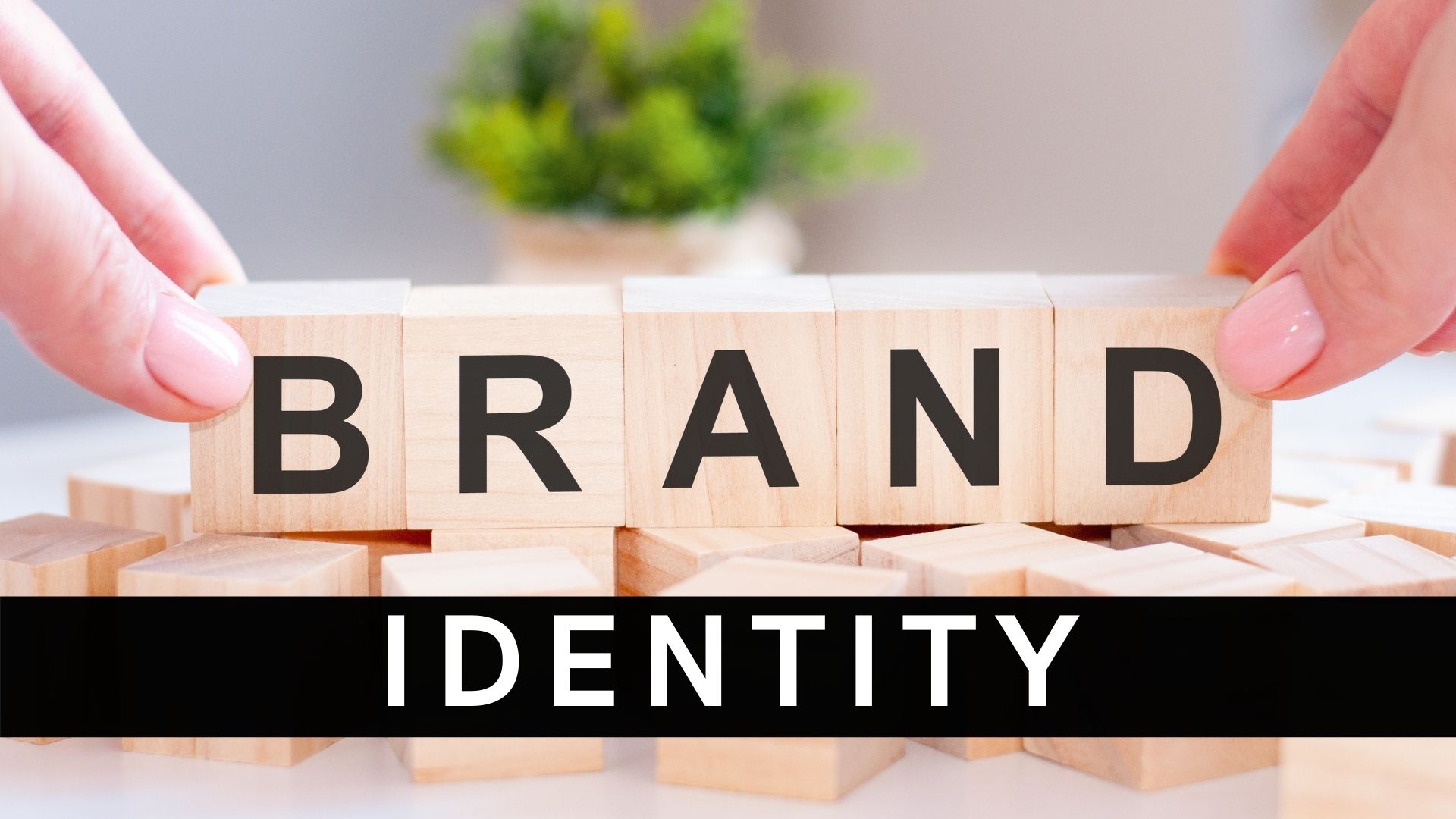A brand identity is an adept inclusion of what your brand values are, what your brand elements say, and what you want your audiences to have a perception about your brand to portray the right image of your brand and stand out from the competition.
It is quite different from the brand images, as the brand image is associated with the subjective perception from the outside while brand identity is managed by the brand owner. So, when you want to create a brand identity for your business, you will need to design it after understanding how you want your brand to be perceived by your audiences.
What is Brand Identity?
Brand Identity includes all the visible components of a company’s product or service that help a customer distinguish it from other brands. These visible components include logo, tagline, color, and other components.
It is the message that a consumer receives from the product of a business. However, brand identity is different from brand image. The former term can easily be associated with product recognition.
Importance of Building a Brand Identity

Creating a brand build a brand market research strategy logos competitors develop shapes apple voice memorable communicate
1. Represents the Brand
Brand identity is the proper representation of a company’s brand. Brand identity component such as logo serves as the “face” of the business. It is the first thing with which a customer encounter.
2. Provides trust and credibility
As specified above, brand identity is the “face” of a business. When a company establishes a face and maintains it consistently, it can provide trust and credibility.
3. Leave Advertising Impression
With brand credibility, a business can leave advertising impressions on various platforms. Therefore, a brand identity can leave advertising impressions.
4. Widens customer base
The brand identity of a business can attract people and can delight existing customers. Hence, a business can widen its customer base by adding new customers and delighting the existing ones.
How to Create a Brand Identity?
The steps to build brand identity differs as per every company. But following are the general steps that a company should follow to build a better brand identity:
1. Carry out a SWOT, Goal, Customer Identification, and Personality Analysis
Before starting your brand identity-building process, make a SWOT analysis of the firm, showing the firm’s weaknesses, opportunities, strengths, and threats.
It can help the firm identify the goals and what steps are necessary to achieve those goals. Determine the goals and mission of the firm. Identify the segment of customers that the company’s brand targets.
Another essential aspect in the brand-building step is to personalize the brand image with the colors, type, and imagery that can perfectly represent the brand. It will set the stage for building a strong brand identity for your business.
2. Visual Elements to make a Successful Brand Instantly Recognizable
Logo designing
After determining the business in the first step, now’s the time to design a logo for a brand. The logo is not a sole part of brand identity, but this is what matters the most. A customer can recognize a brand instantly because of its logo. Decide on the color and type of logo and make a template of it.
Typography
It is again one of the key elements of visual branding which is associated with the font type that you choose for your branding and marketing materials. Choosing logo fonts and brand fonts adeptly is very important to make a successful brand name. You should opt for Serif or sans serif or other types of fonts to suit best with your brand personality and brand identity design.
Color palette
The next step for building brand identity by opting for the right visual elements is selecting the right color palette. Your target audiences or potential customers have a psychological relation to different colors. Therefore, you should finalize your branding colors and logo colors strategically to get favorable outcomes from your audiences for your product or service.
In addition to these, some of the other visual elements that will help you in effective brand positioning and developing the brand’s instantly recognizable personality are-
- Website
- Product packaging
- Business cards
- Email design
- Marketing materials
- Visual branding
- Logo design
While building your brand, your graphic designer should pay upon these elements to establish your brand name as a great brand that is consistent with brand appeals and values.
3. Language integration
After deciding on the logo, now a company should integrate the brand with the language. Choose a language that can match the personality of the brand. For example, if the brand identity is high-end, professional language suits best for this condition, while if the brand is laid-back, try to be more conversational.
4. Need to create a Brand Style Guide
After finalizing your design assets, your brand style guide will help you use all of those in the right manner. Such guides include outlines for your design assets. They will include details about when and how to use those design assets. The guide will ensure the design of your visual elements is in the line with your brand identity.
5. Promote Brand Identity
When a brand comes to real life, it is the best time to introduce it to the world. A firm should advertise the brand either via social media or traditional methods.
6. Monitoring the brand’s personality
After introducing the brand to the world, now monitoring the brand is also crucial for the business. A firm can use Google Analytics, surveys, comments, social media discussions, and other methods to monitor the brand and see how the customers reacted to the newly introduced brand.
Mistakes Committed in Brand Identity Design
When a company tries to build brand identity, it is expected that the companies make mistakes that can weaken their branding efforts. These common mistakes include:
1. Lack of fresh Marketing Content
Regular updating of marketing content is essential. A company should not forget about this critical aspect. There is no need to redo all the marketing efforts, but it is essential to update them.
2. Internal Training Problems
Most of the companies fail to train their employees about the newly created brand. The employees of a company must be aware of the brand and its mission and vision. This will help them to reflect the brand values and system to the customers strongly.
3. Lack of consistency in messaging
While deciding on brand identity, a firm needs to maintain consistency in messaging. Sometimes a firm forgets brand-specific messaging components like telephone messaging, website, business cards, and more.
Example of Strong Brand Identity

1. Coca-Cola’s Visual Elements and Brand Positioning
When it comes to the brand identity of Coca-Cola, brand features that come into your mind include its well-known logo, brand colors, polar bear ads, share a coke campaign, classic ribbon-like imagery featured on its cans, etc. All these optimize the brand identity in front of the target audience. Two of the main things of Coca-Cola’s brand identity are its red logo in script text and uniquely shaped bottle.
2. PayPal Visual Language to build a brand
It comprises a consistent brand identity across the digital and physical worlds. It kept its recognized brand identity characteristics by adopting “an identity to better express its innovative DNA and future as the leader in digital payments.”
3. Netflix Instantly Recognizable Brand Personality
Netflix’s recognizable brand personality is associated with the simple style of the Netflix logo that perfectly lends to its easy-to-use service offerings the company. It comprises a signature red color with a clean and bold typeface that catches the eye of the user wherever displayed. As per the Global Brand Simplicity Index, the brand Netflix was ranked as the simplest brand. The brand believes simplicity is the core of a positive user experience and its brand identity translates its core belief.
Conclusion
Brand identity is the visible elements of a brand, such as color, design, and logo, that identify and distinguish the brand in consumers’ minds.
With the help of a strong brand identity, a brand differentiates itself from other competitors.
What factors do you consider most important to the strong brand identity of a business? Share your opinion with us in the comment section below.
Pinky is an MBA in Marketing from the University of Mumbai. She loves helping people out in learning Marketing and sharing latest ideas and tactics for growing businesses.
